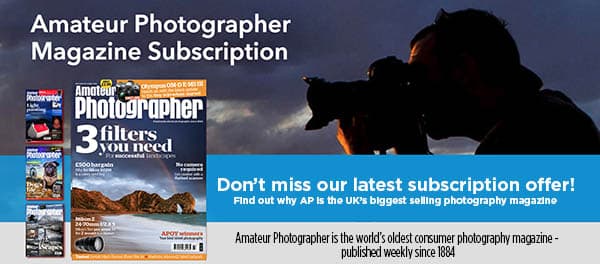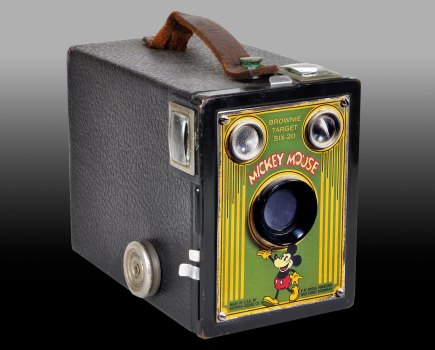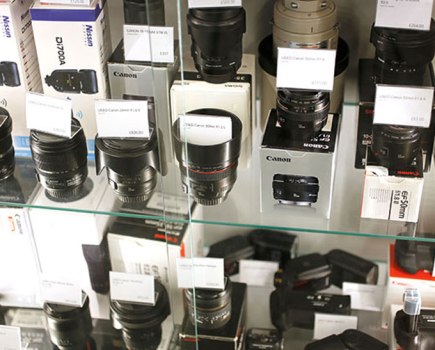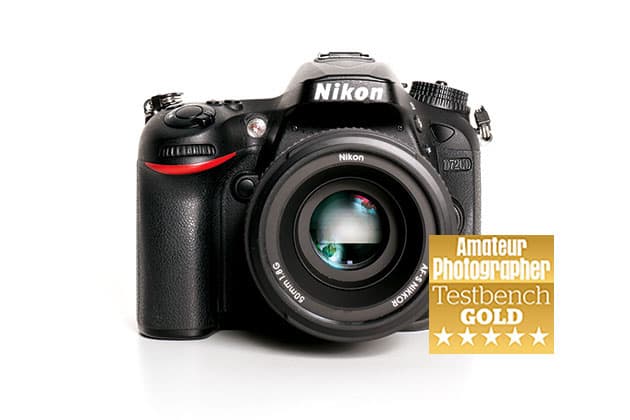
The Nikon D7200 has a sensitivity of ISO 100-25,600, with extended settings reaching up to ISO 102,400
At the time of its release in 2015, the D7200 was Nikon’s flagship APS-C DSLR. Like the D7100, the Nikon D7200 was intended to meet the expectations of enthusiasts and semi-pros who wanted a versatile camera with a number of professional-grade features. Improvements included a 51-point AF system that was more responsive in low light, introduction of NFC connectivity and a 24MP APS-C CMOS sensor that was less prone to generating banding in night scenes at high ISO. The EXPEED 4 image processor didn’t offer any increase in burst speed (6fps); however buffer depth improved from a measly five raw files on the D7100 to a more acceptable 18 frames.
Nikon D7200 at a glance:
- £454-£534 body only (via MPB.com)
- 24.2MP DX-format APS-C CMOS sensor
- ISO 100-102,400 (extended)
- 51-point Advanced Multi-Cam 3500 II AF system
- 3.2in, 1.23-million-dot fixed screen
- 675g (body only)

There is a 3.2in, 1.23-million-dot-fixed screen at the rear. The viewfinder offers 100% frame coverage
For and against
+ Enlarged buffer allows more than 100 JPEGs to be shot continuously
+ Battery life: 1,110 shots per charge
+ Dust and weather sealed
– Live View focusing is noticeably slower than more modern DSLRs
– No touchscreen control
– Fixed screen makes it harder to shoot from low/high angles
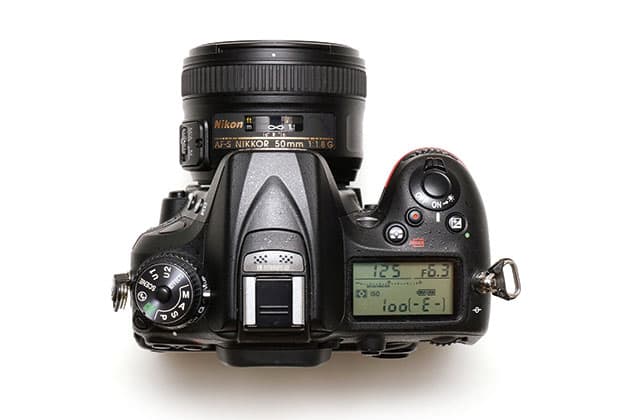
What we said
- ‘The D7200 is a more appealing choice for wildlife and sports photographers with its improved buffer performance’
- ‘Images have a very good dynamic range and hold up well at higher ISO sensitivities’ G ‘The D7200 ticks the right boxes for outdoor photographers’
- ‘If a hard-wearing body and incredibly quick AF system are your main priorities, the D7200 could be just right for you’
What to pay
The second-hand market isn’t short of used D7200s. MPB.com had six examples available when we checked online, with good-condition models showing signs of use and light marks/ scuffs to the body going for around £454. Pay around £55 more and you’ll be able to pick up a D7200 in excellent condition with a shutter count of around 10,000 frames for £509. Like-new examples of the Nikon D7200 go for £554.
How the Nikon D7200 fares today
The D7200 isn’t in the same league as the D500 in terms of speed or performance, but it shouldn’t be overlooked. As the images over the page show, it produces stunning results in the right hands. Conveniences such as Wi-Fi connectivity, long battery life and an intuitive layout of buttons, make it a sensible upgrade for photographers who own older entry-level Nikon DSLRs and DX-format lenses.
New alternatives to the Nikon D7200
The Nikon D7500 that arrived in 2017 omits some of the great features you get on the D7200. You do get the 20MP sensor and EXPEED 5 image processor from the D500, but it lacks a dual card slot and doesn’t offer metering support for manual focus Nikkor AI (non-CPU) lenses. It shoots a burst at 8fps for up to 50 raw images, but doesn’t allow you to attach or use it with a battery grip.
What the owners think of the Nikon D7200
Three Nikon D7200 users give their verdict
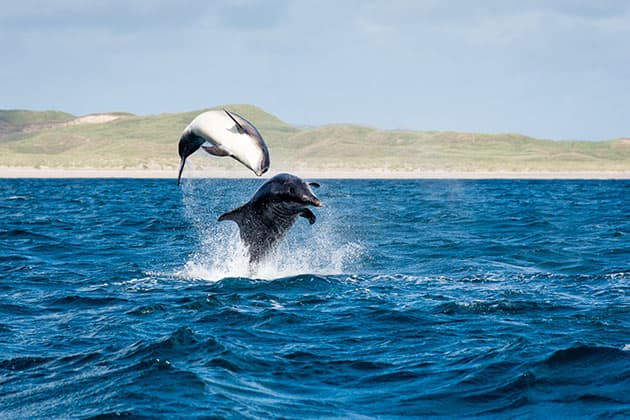
Bottlenose dolphins at play, Isle of Coll, Scotland. Nikon AF-S 18-140mm f/3.5-5.6G ED VR, 1/640sec at f/8, ISO 200. Credit: Joe Mortimer
Joe Mortimer
My photographic journey started with the humble D3300. Photography fell hand in hand with other interests, as I mostly shot landscape, nature, travel and adventure sports. Whilst the D7200 had a similar 24MP crop sensor, I was impressed with its range of advanced features in a more rugged, weather-sealed body. It represented an affordable ‘do it all’ option for the beginner/intermediate such as myself. For landscapes I gained exposure bracketing, and for wildlife and sports it provided a higher frame rate, higher maximum shutter speed and back-button focusing. The advanced flash features even allowed me to experiment with portraiture and off-camera flash. The weight of the D7200 when considering its sensor size became its biggest drawback for activities like travelling and hiking. With full-frame cameras becoming more competitively priced, and advancements in mirrorless technology, I’ve since moved on to newer and lighter things. Although no longer my primary camera, I still own my trusty D7200. It is a joy to use, and a great camera to learn with.
For and against
+ Rugged body
+ Advanced flash functionality
+ Reasonable frame rate for action/sports
– Size and weight compared to mirrorless

This shot of a puffin hiding in the shadows was captured on one of Laura’s wildlife trips. Sigma 150-500mm f/5-6.3 DG OS HSM, 1/250sec at f/7.1, ISO 200
Laura Hill
I upgraded to the Nikon D7200 after starting my journey in photography with a Nikon D3300. One of my passions is capturing images of wildlife, especially owls, so the big attraction at the time was it being the best crop sensor camera within my budget that could handle low light reasonably well. I have owned the D7200 for just over a year now and feel my photography using this camera has improved hugely. I no longer have to worry too much about the light fading, and often find myself cranking up the ISO without too much worry that noise is going to ruin the final result. In an ideal world the camera would record in 4K resolution; however Full HD is adequate for me and I’m very pleased with how crisp and clear the video quality is. I also find it useful being able to send raw files to mobile devices via Wi-Fi.
For and against
+ Good ISO capability
+ Built-in Wi-Fi
+ Weather sealed body
– No 4K video recording
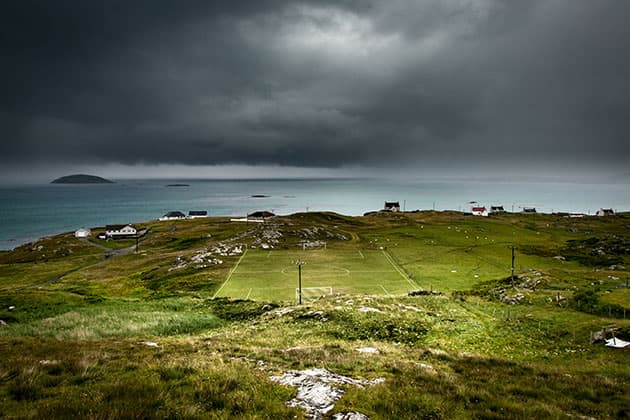
Andrew won Young Scottish Landscape Photographer of the Year in 2018 with this image of Eriskay football pitch. Nikon D7200, Nikon AF-S 18-105mm f/3.5-5.6 G ED VR, 1/3200sec at f/3.5, ISO 400. Credit: Andrew Bulloch
Andrew Bulloch
I began taking photos when I was 13 using my father’s DSLR. I then decided to purchase my own Nikon D7200 as it was going for a very reasonable price second- hand. It looked to be a decent all-round camera and that has proven to be the case. It has won me a couple of awards including the Young Scottish Landscape Photographer of the Year. The biggest drawback is the focusing, which can sometimes be a little slow and is not always as accurate as I would like, but as most of my shots are of stationary landscapes I have plenty of time to check the focus. An articulating screen would also be a useful addition, but I wouldn’t expect one for the price. The dual SD card slots are handy and the battery life is usually more than enough to last a day of casual shooting. At some point I might upgrade to the Nikon D850.
For and against
+ Dual card slots
+ Reliable performer
– Lacks articulated screen
– Focusing could be more accurate
Trade in and upgrade your set-up for the perfect shoot, every time. Buy, sell and trade in your photo and video gear with MPB. It’s quick, easy and secure.
